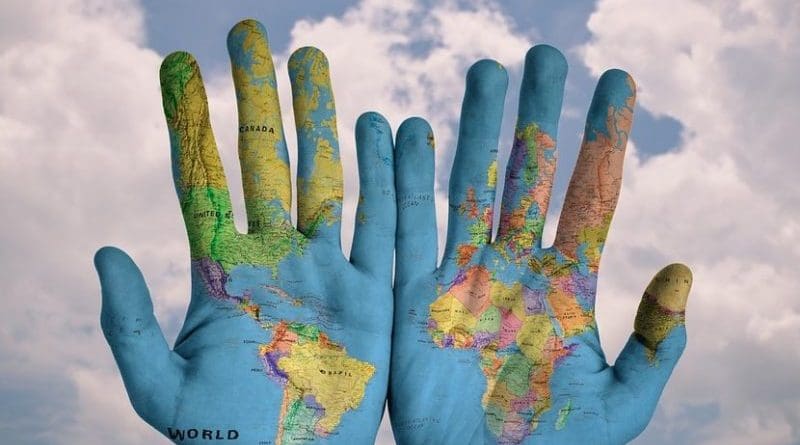U-Turn Or Perfect Storm? Globalization At Crossroads – Analysis
Only 12 years ago, globalization peaked. Today, it is in the doldrums and the Trump trade wars have nullified the recovery. We are at a crossroads, where globalization may further stagnate or fall apart.
According to the new IMF outlook, global growth is forecast at 3.0% for 2019. That’s the lowest since the global crisis of 2008-9. It is largely due to the US tariff wars, which have contributed to the projected slowdown in the US and China.
The IMF projects growth to pick up to 3.4% in 2020. That, however, is predicated on improvements in a number of emerging economies in Latin America, the Middle East and developing Europe, which, in turn, would require a trade recovery. Thanks to the global slowdown, world growth prospects now hover at levels where they were last in the darkest moments of 2008/9.
Worse, the state of globalization reflect even darker scenarios. At the peak of globalization, the Baltic Dry Index (BDI) was often used as a barometer for international commodity trade. The index soared to a record high in May 2008 reaching 11,793 points. But as the financial crisis spread in the advanced West, it plunged by 94% to 663 points.
Last February, the BDI hit even worse; 595 points. In September, optimistic trade speculation drove the index up to 2,500. Now it’s back to around 1,900, some 85% below its peak and where it first was around 2003. Unfortunately, broader measures of global economic engagement offer equally dire visions.
Plunging world investment
Global economic integration is usually measured by world trade, investment, and migration. Before the global crisis in 2008, world investment soared to almost $2 trillion. Before the Trump presidency, the UN still predicted that global FDI flows were projected to resume growth in 2017 and to surpass $1.8 trillion in 2018.
At the time, I predicted the improvement was unlikely and world investment would either continue to stagnate or worse. In hindsight, the latter proved true. In 2018, global FDI flows slid by 13%, to $1.3 trillion; the third consecutive annual decline.
The contraction was heralded by US multinationals repatriating earnings from abroad by exploiting the Trump tax reforms. As a result, FDI flows in advanced economies fell to levels last seen in 2004. Geopolitics and trade tensions virtually ensure that risk and uncertainty will weigh on FDI flows in the ongoing year and beyond.
In 2018, the U.S. remained the largest recipient of FDI, followed by China, Hong Kong and Singapore. However, as US tariff wars and domestic divisions are expanding, investors are scrutinizing even US investments. China is suffering from US neo-containment policies. Singapore barely avoided a technical recession.
In addition to suffering from downgraded global and trade outlooks, structural maturing and aging, democracy destabilization in Hong Kong could severely undermine its economic prospects in the foreseeable future.
Undermined world trade recovery
In 2017, world merchandise trade recorded its strongest growth in six years. According to the World Trade Organization (WTO), the ratio of trade growth to GDP growth returned to its historic average of 1.5, far above the 1.0 ratio recorded in the years following the 2008 financial crisis.
At the time, I suggested that WTO was overly optimistic. As the US tariff wars would materialize in 2018, trade outlooks would be downgraded. And that’s pretty much what happened.
Last spring, WTO expected world trade to continue to face strong headwinds in 2019 and 2020, thanks to elevated trade tensions and increased economic uncertainty. Now it is setting its hope for 2020, when it expects trade growth to rebound to 3.0%.
Unfortunately, the WTO is neglecting the prospects of continued and deteriorating trade conflicts and the simple reality that by 2020 Pentagon hopes to complete the worldwide transfer of 60% of its warship capacity to Asia Pacific.
In the absence of countervailing forces, the twin trends will ensure elevated geopolitical tensions and undermined economic prospects.
From migration restrictions to refugee crises
While international media tends to linger in refugee crises in Southern Europe and US Mexican border, the global displacement burden falls disproportionately on emerging and developing economies.
According to the UN Refugee Agency (UNHCR), almost 71 million people were displaced as of the close of 2018, while some 13.6 million people became newly displaced during the year due to wars or persecution.
Overwhelmingly it is developing countries that are most affected, thanks to destabilization, violent conflicts and regime-change policies. At the end of 2019, Syrians still made up the largest forcibly displaced population (13 million), followed by Colombians (8m), Congolese (5.4m) and Afghanistan (5.1m).
The number of the globally displaced is the highest in the UNHCR’s 70-year history and the greatest since 1945, despite peaceful conditions – for now.
Too close to the abyss
We live amid a world-historical moment. In 2008-9, the global crisis was contained by massive fiscal stimulus packages, ultra-low rates and, when that proved inadequate, rounds of quantitative easing.
Now, a decade after the crisis, central banks’ rates remain ultra-low and most continue asset purchases, whereas soaring debt levels limit new fiscal injections. In the next global crisis, there will be no or only leaking lifeboats.
After 1945, reason prevailed as the international community opted for accelerated world trade, investment, even migration. Following three decades of misguided policies, tens of millions of war dead, the Holocaust, Hiroshima and Nagasaki, it was recognized that other alternatives were prohibitive.
Perhaps we have forgotten the lessons.
A version of this article was released by South China Morning Post (Hong Kong) on October 22, 2019

